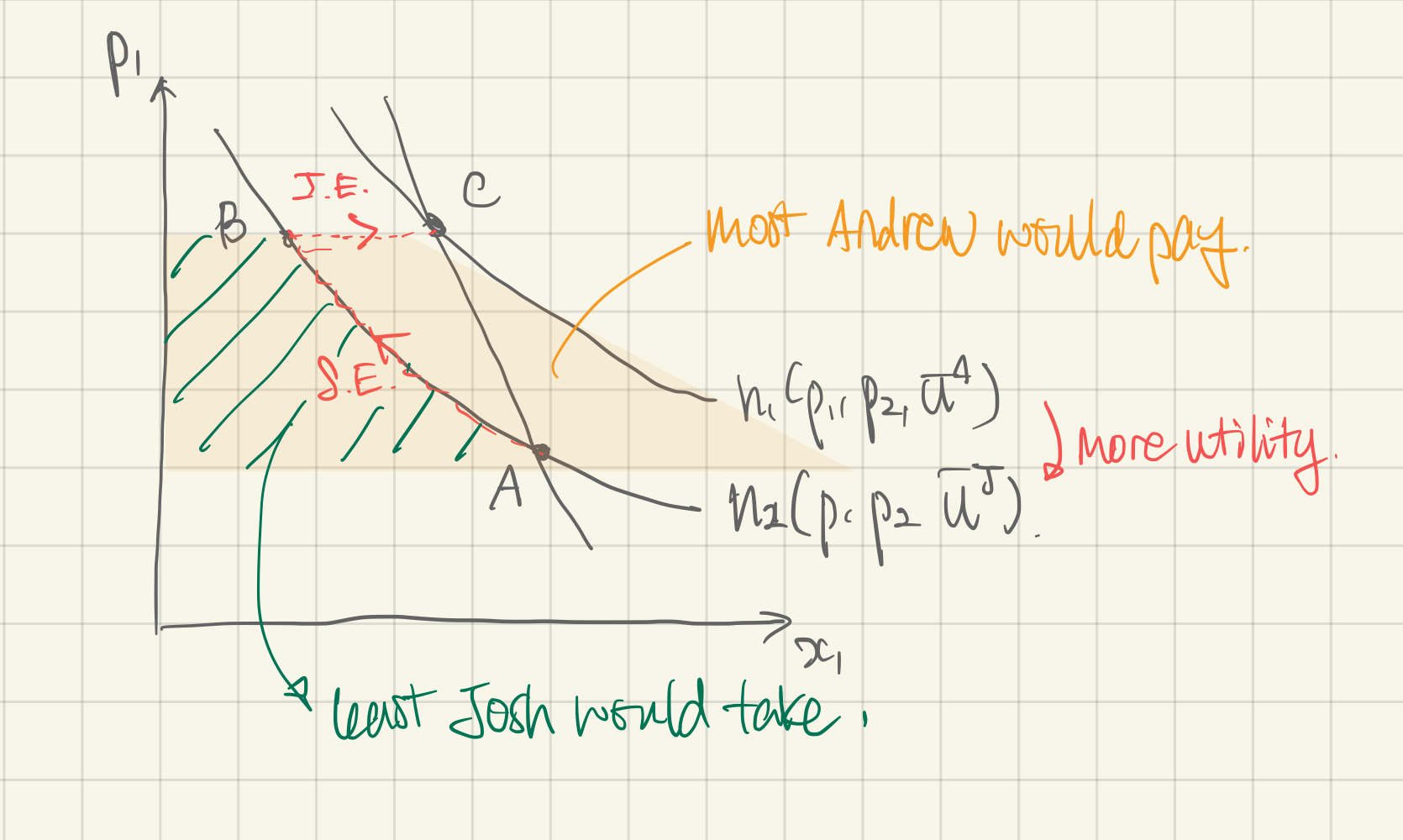Q. Coupon Exchange Problem. Josh and Andrew have identical utility functions where is milkshakes and is toys.
- Their incomes are the same
- Josh has a 50% off coupon for .
- ⇒ Can Josh and Andrew work out a trade where Andrew buys the coupon? Figure out
- Least Josh would take for the coupon using the expenditure function
- Most Andrew would pay for the coupon (also using the expenditure function)
- ⇒ Trade occurs when (least Josh would sell for) < (most Andrew would pay for)
Idea
CV and EV - YouTube Oh no! the price of good increased!
- 🥺 She’s now at a lower Indifference Curve. How much should we give as compensation to get her back on the original indifference curve? ⇒ Compensating Variation
- 😈 She’s at a lower inx_{1}$ increase, we just take money away from her directly? ⇒ Equivalent Variation
def. Compensating Variation (CV). When a price of a good changes, the Compensating variation is the change in expenditure () required to maintain the utility.
def. Equivalent Variation (EV). An individual may trade a change in income () for a change in prices.



Compensating Variation (CV) is how much money an individual would have to get (or have taken away) to be indifferent to the change in prices